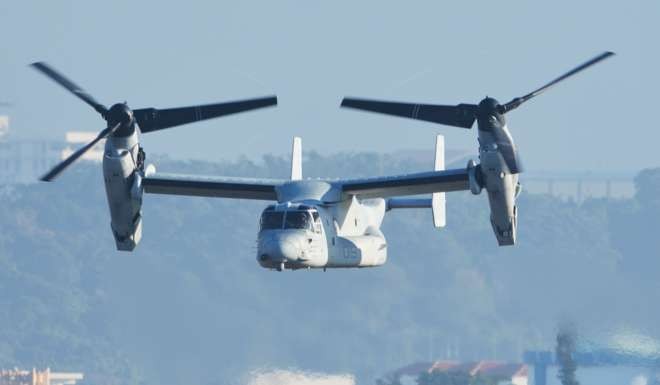
Desert debacle: how Trump’s first counter-terror operation descended into chaos in Yemen
A dead eight-year-old, a US$70m aircraft destroyed, and the first US combat death of the Trump presidency
The mission facing the Navy SEALs as they approached a remote desert compound was a risky one: detain Yemeni tribal leaders collaborating with al-Qaeda and gather intelligence that could plug a critical gap in US understanding of one of the world’s most dangerous militant groups.
Instead, a massive firefight ensued, claiming the life of an American sailor and at least one Yemeni child, serving as an early lesson for US President Donald Trump’s national security team about the perils of overseas ground operations.
The January 28 raid in Yemen’s Bayda governate, which also included elite forces from the United Arab Emirates, was the first counter-terrorism operation approved by Trump, who took office a week earlier. And the death of Chief Special Warfare Operator William “Ryan” Owens, who would later succumb to his injuries, marked the first combat death of Trump’s young presidency.
Special operations like this have always been risky for presidents to approve. Trump and some of his advisers have already promised to give the military greater rein in authorising such missions as part of their desire to wipe out extremist threats. But the president has also said he is leery of getting entangled too deeply in costly operations overseas.
In Saturday’s operation, the SEALs faced difficulties from the start. After the US forces descended on the village of Yaklaa, a heavily guarded Al-Qaeda in the Arabian Peninsula (AQAP) stronghold surrounded by land mines, militants launched an intense counter-attack.
As the fight intensified, officials called in Marine Cobra helicopter gunships, backed by Harrier jets, to strike the AQAP fighters, according to US officials familiar with the incident. US forces were extracted by an elite Special Operations air regiment.

The two units planned to meet up in the desert to transfer the wounded SEALs so they could be taken back to amphibious assault ship for treatment, but one of the Osprey’s lost power, hitting the ground hard enough to wound three Marines and disable the aircraft.
With the twin-engine transport out of action, a Marine jet dropped a GPS-guided bomb on the disabled US$70 million Osprey to ensure that it did not fall into militant hands.
Yemeni officials said the operation also killed 15 women and children including eight-year-old Anwaar Al-Awlaki, daughter of the late radical-Yemeni American cleric, Anwar Al-Awlaki, who was killed in 2011 in a US drone strike. US officials said they were unable to immediately confirm the civilian deaths, but suggested most or all of those killed were militants.
Pentagon spokesman Captain Jeff Davis said that women participated in the gunfight and some were killed.

Since 2015, Saudi Arabia has led a coalition of Arab nations launching air attacks on Shiite Houthi rebels. The United States has provided some support to Saudi air operations but has distanced itself over allegations of repeated attacks on civilian targets.
After considering the operation for several weeks, officials concluded the raid would not be possible before Obama’s January 20 departure, and they began to tee up a final decision for Trump’s top advisers.
The mission, the first US-led ground raid in Yemen since 2014, comes as the United States tries to rebuild its counterterrorism mission there. Last year, the United States established a tiny Special Operations presence in coastal Yemen, working alongside Emirati troops to keep tabs on activities by AQAP.
The group has been one of the most potent branches of the global militant network and has been involved in multiple plots to attack the West.

While seemingly indicative of a more aggressive stance by Trump, one official described the raid and new proposal as an outgrowth of earlier Obama-era operations that have pushed al-Qaeda militants from their sanctuaries into areas and provided more opportunities for US strikes.
“We expect an easier approval cycle [for operations] under this administration,” another defense official said.
The same model was applied after an extended US air campaign in Libya, which pushed Islamic State militants into desert camps where they were eventually pursued and destroyed by stealth bombers.
A former senior defense official familiar with prior operations in Yemen said that Saturday’s raid and the potential for expanded operations were “overdue.”
“We really struggled with getting the White House comfortable with getting boots on the ground in Yemen,” the former official said, like others speaking on condition of anonymity to discuss internal deliberations. “Since the new administrations has come in, the approvals for what the Pentagon has appeared to have gone up.”
Already, the Trump administration, in a flurry of recent executive actions, has shown a penchant for tightly held decision-making that has left out key agency officials.
Luke Hartig, who was a senior official for counter-terrorism under President Obama, cautioned that even swift or delegated decision-making on national security matters required consultation with a range of agencies that could address legal, diplomatic and other questions.
“It’s not about slowing things down - it’s about the making sure the complexities are well addressed prior to approval,” said Hartig, who is now a fellow at the New America Foundation and runs a research group at National Journal.
The new Trump White House touted the operation this week as a success. A release by the White House Sunday said the raid killed 14 militants and captured intelligence that could deter future attacks.
On Tuesday, Trump spoke with Owens’ family to offer his condolences.

